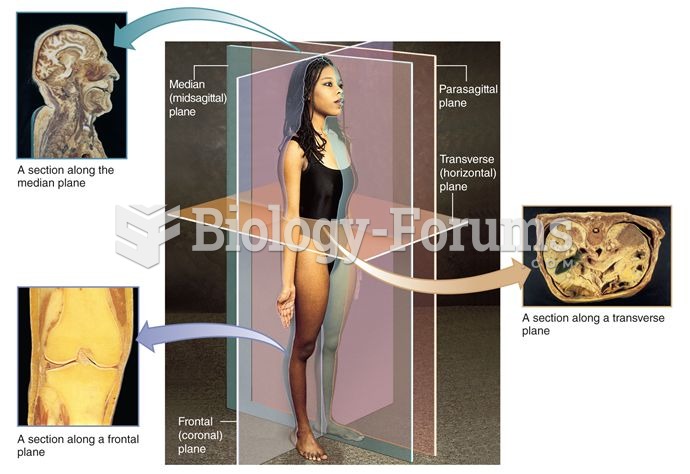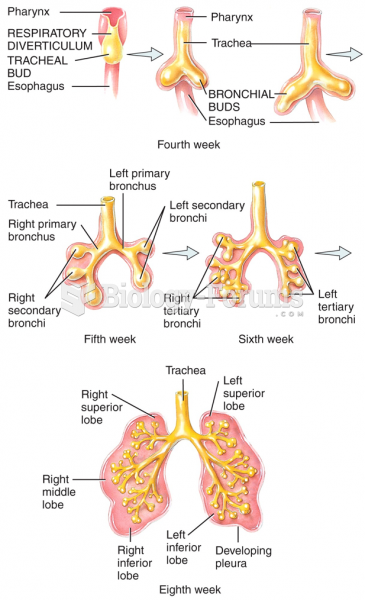|
|
|
Human stomach acid is strong enough to dissolve small pieces of metal such as razor blades or staples.
For pediatric patients, intravenous fluids are the most commonly cited products involved in medication errors that are reported to the USP.
Autoimmune diseases occur when the immune system destroys its own healthy tissues. When this occurs, white blood cells cannot distinguish between pathogens and normal cells.
The Babylonians wrote numbers in a system that used 60 as the base value rather than the number 10. They did not have a symbol for "zero."
Despite claims by manufacturers, the supplement known as Ginkgo biloba was shown in a study of more than 3,000 participants to be ineffective in reducing development of dementia and Alzheimer’s disease in older people.







